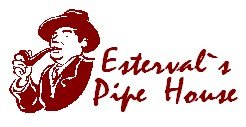PETER HEDING
(* 1971)
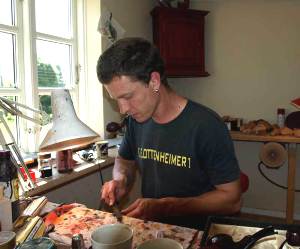
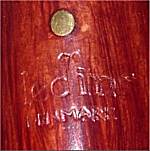
available at
Peter Heding – the scientist who became a pipemaker
by Jan Andersson*
When one of the youngest scientists at Steno Diabetes Center in Gentofte, Denmark, without previous warning handed over his resignation, it certainly was like a bombshell for his colleagues. That someone suddenly left a well-paid job, with good opportunities to an excellent career, was really very unusual. And when his colleagues heard that he should be making smoking pipes instead, it is not hard to imagine that the surprise was even greater. The name of this young scientist is Peter Heding.
Peter Heding was born in Copenhagen in 1971. After school he studied economics and worked in an electronic company for a few years. But in 1995 he returned to the University of Copenhagen, but now to study biology. After six years there he got a scholarship and started as a scientist at the Steno Diabetes Center, where he later got a permanent job. At the same time he was working on his Ph. D. degree, which he got in February 2005. But already then another interest had come up, an interest that fascinated him even more.
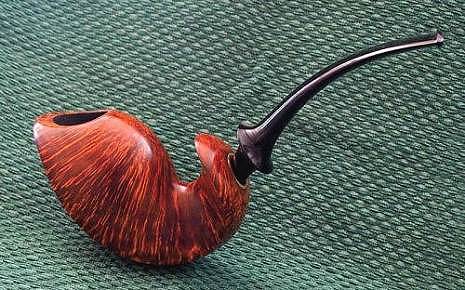
A programme on the TV became important
For a long time, Peter had strongly longed for something to do with his hands, a handicraft in which he could use his great creativity. In 2003 he happened to watch an interview with the pipemaker Anne Julie on the TV, and he was excited by the beautiful things she could make from a piece of briar. This was exactly what he was longing for – a combination of functionality and beautiful, personal design. Tom Eltang’s workshop was not situated far from Peter’s job, so one day, on his way home from work, he visited Tom and bought a few blocks of briar. Then he started to work with the simple tools he had at home, mainly a file and a knife. He was working late in the evenings and the floor in the kitchen was the most common working place.
When Peter had made two pipe heads, he took them to Tom. They were not bored and had no stems, but Tom was impressed from what he saw. A fact is that Tom was so impressed that he invited Peter to come to his workshop and get some advice how to carry on. Of course Peter gladly accepted this offer and went there regularly for two years.
Peter Heding’s pipes are introduced at the Chicago show
In 2005 Tom thought it was time to show Peter’s pipes to the public, so he brought some of them to the Pipe Show in Chicago1). It is not hard to believe that Peter was waiting for Tom to return with great excitement. How had his pipes been received? Had anyone bought any of them? It certainly was a great relief, when Peter got the message that all his pipes were sold. When the sale was good even the next year, Peter started to think that perhaps it would be possible to make a living as a pipemaker. One year later the decision was taken.
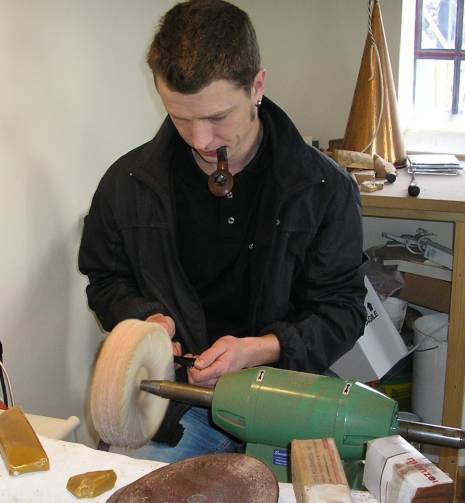
From Copenhagen to Englerup
Three years ago Peter and his family moved from Copenhagen to a little village called Englerup, situated not far from Roskilde. It is a quiet and charming village with a lot of old houses, some of them with thatched roofs. Peter’s house is new, but it is built to match the old houses around. When they bought the lot where the house was built, there was an old henhouse at the premises. But it was indeed out of shape, among other things there was no roof on it. Peter has repaired that henhouse and made it into a comfortable and suitable workshop.
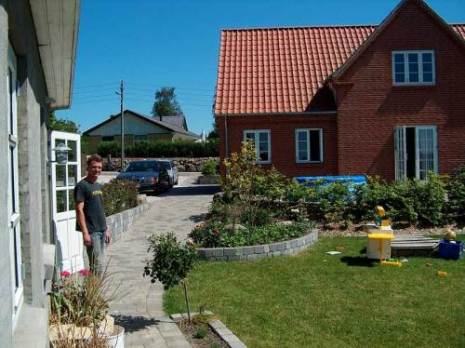
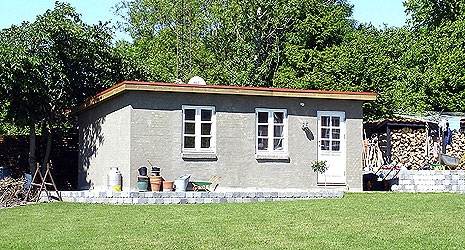
I (Jan Andersson) visited Peter in the beginning of June, and when I had heard the story about how he became a pipemaker, I could not help asking: “But wasn’t it difficult to take a decision like that, changing a well paid job as a scientist into an uncertain future as a pipemaker?” From Peter’s answer I understand that it was not too difficult. For a long time he had wanted to make pipes and when he now got the possibility, he had to take the chance. It is also completely clear that he likes his job. He prefers working alone, and it is also very convenient for the family that he can work at home. His wife is a doctor and often works late evenings and sometimes even nights, and as they have three small children it is practical that Peter can adjust his working hours, so that he can take the children to and from school or kindergarten.
Personal shapes
There are not many machines in Peter’s workshop, which tells us that he is working very much on free hand. He has a sander, a drill, which is mainly used for rustication, a lathe and a machine for polishing, but that is all.
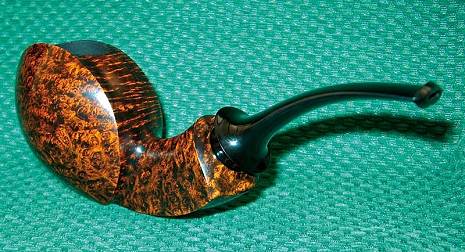
Mainly Peter is using Italian briar and the stems are made from German ebonite. Bamboo, horn, ivory and some exotic wood are sometimes used for adornments. The pipes are smooth, rusticated or sandblasted. Peter makes the sandblasting in Tom Eltang’s workshop. There are four grades: bronze, silver, gold and diamond. These marks are placed above the stamp, “Heding Denmark” in the form of a dot. At the highest grade a little Zicoria diamond is fit. The greatest markets for Peter’s pipes are U.S.A., Russia and China, but they are also available in several other countries.
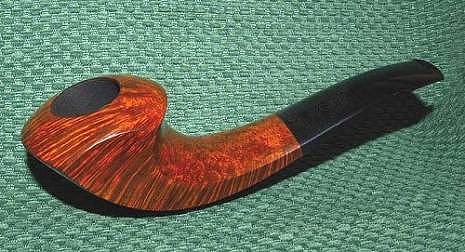
Peter has a very personal style, but of course he has been inspired by other pipemakers. Especially he mentions that Tom Eltang, his teacher and mentor, Teddy Knudsen, Kent Rasmussen and Bo Nordh have inspired him a lot.2) He constantly gets new ideas and the fantastic thing being a pipemaker, Peter says, is that a new idea may come true immediately or at least the next day. There is a great difference from his earlier job, where he often had to wait for the result in several years.
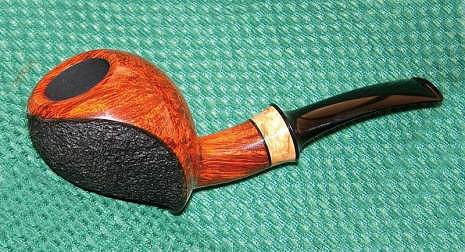
A devoted fisherman
We have spent some hours in Peter’s workshop. The time has passed quickly, as always when you have a nice time. I have seen some fantastic pipes, some of them completely ready, some half finished. We go out on the lawn behind the house. From the terrace you can see “Isefjorden” gleaming in the distance. “There is a lot of salmon trout there”, Peter says. He takes a great interest in fishing and has several times been on fishing tours in the north of Sweden and Norway. Now he is hoping that his sons (all his three children are boys) will be as interested in fishing as he is. Then, when they get a little older, Peter can take them on exciting fishing tours. And to sit by a lake in the mountains in the north waiting for the fish to bite, pipe in mouth and your sons at your side, what could be better?
* With kind permission of Jan Andersson. All rights reserved. Jan Andersson is the secretary of the Pipe Club of Sweden and editor of "Rökringar" (Rings of Smoke), the journal of the Pipe Club of Sweden.
Personal statements:
1) I bought my first Peter Heding pipe in Fall 2004, when Peter´s pipes were introduced by Pia Eltang at the Show in Copenhagen related to the Slow Smoking World Cup. This was one day after Tom Eltangs 30. Anniversary in pipemaking.
2) In my very personal opinion, Peter´s pipes are also influenced by Cornelius Mänz.
Any copying, publication or reproduction of the papers and / or pictures published herein in printed or electronic media is strictly prohibited without the explicit written consent of these pages' owner. (c) Pipendoge, 2009
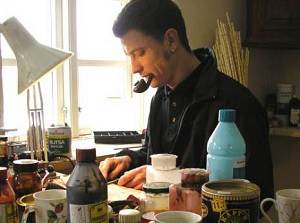
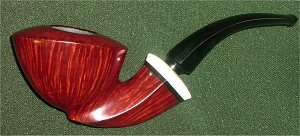
My first Heding-Pipe bought 2004
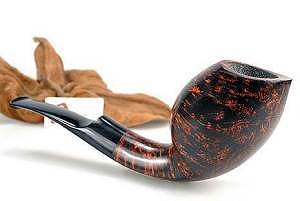
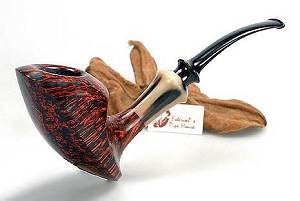
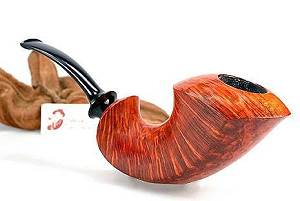
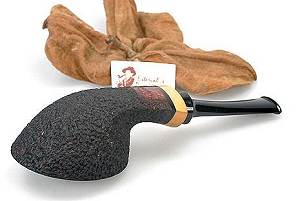
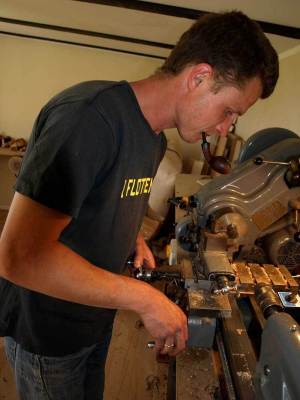
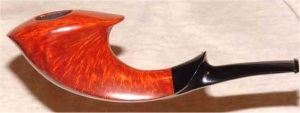
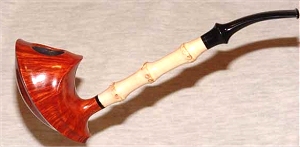
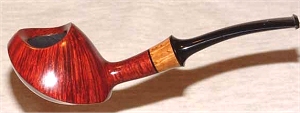

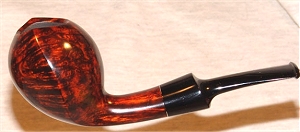
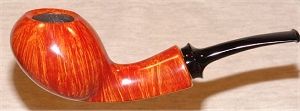
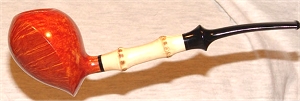
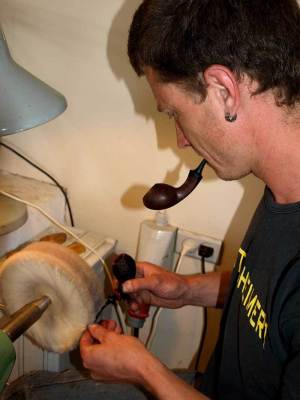
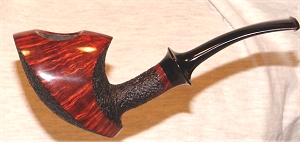
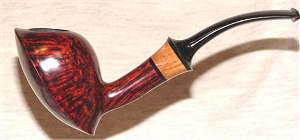
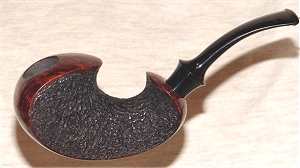
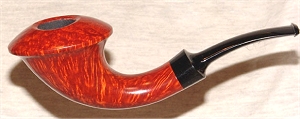
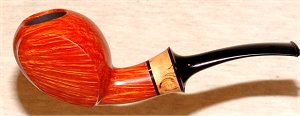

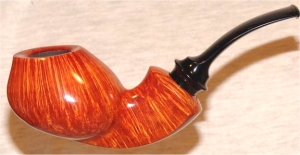
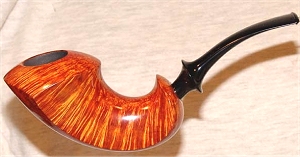
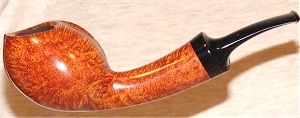
Pictures by Jan Andersson,
Per Billhäll & Andreas Harm
- With kind permission -
